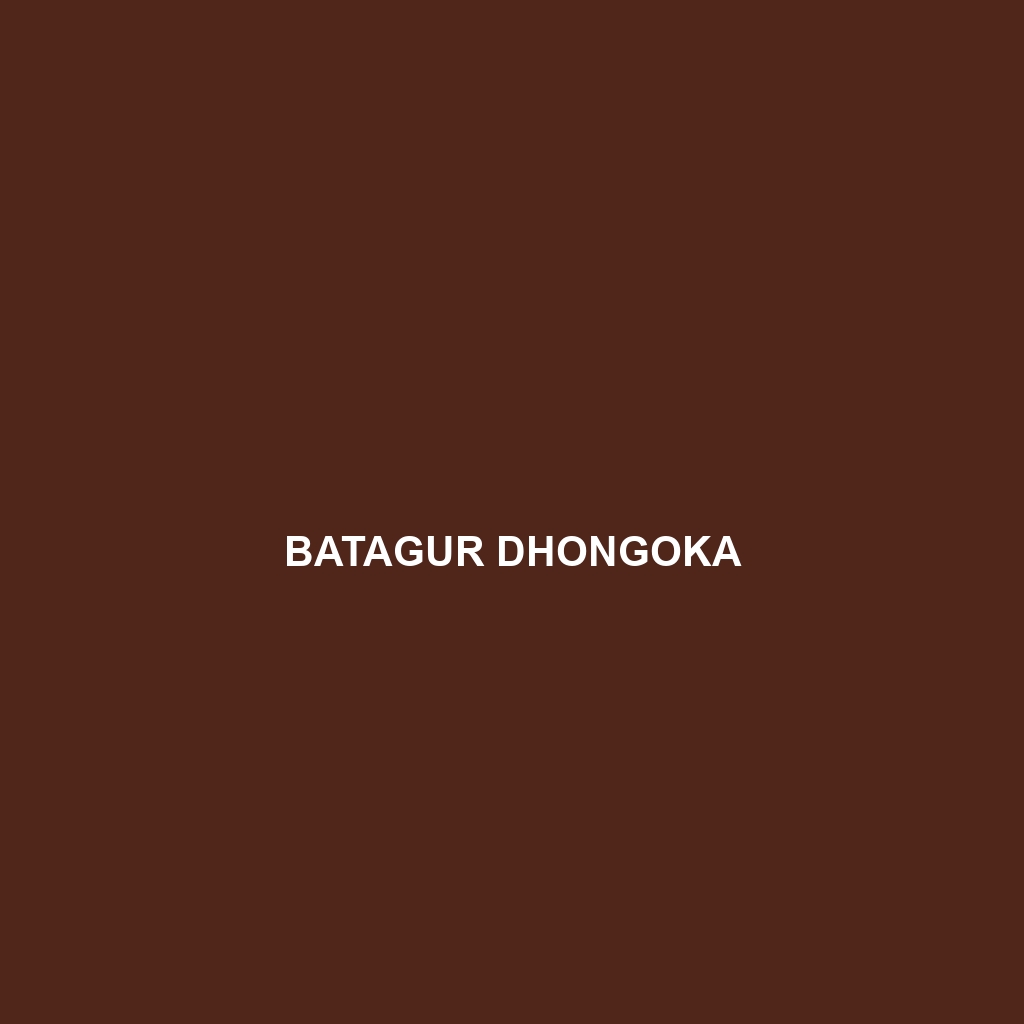Species Description: Batagur Dhongoka
Common Name: Batagur dhongoka
Scientific Name: Batagur dhongoka
Habitat
The Batagur dhongoka, commonly known as the Dhongoka turtle, is primarily found in the freshwater environments of Southeast Asia. This species inhabits rivers, ponds, and estuaries, particularly in the regions of Bangladesh, India, and Myanmar. The Dhongoka turtle thrives in areas with sandy or muddy riverbanks, where it can easily nest and find shelter from predators.
Physical Characteristics
This species is a large turtle, reaching lengths of up to 70 centimeters (approximately 28 inches). The Batagur dhongoka features a distinctive shell that is typically brown or olive green, with yellow or orange markings that provide camouflage against predators. Its elongated body and flattened shape are adapted for life in aquatic habitats. Additionally, the turtle possesses strong, webbed feet, enabling it to navigate through the water efficiently.
Behavior
The behavior of the Batagur dhongoka is largely spatial and social. These turtles are known to bask in the sun on riverbanks or logs to regulate their body temperature. They are also semi-aquatic, often seen foraging for food in shallow waters. While generally solitary, these turtles may congregate during nesting seasons, showcasing their social structure and reproductive behaviors.
Diet
The Dhongoka turtle is primarily herbivorous, with a diet that consists of aquatic plants, fruits, and algae. They are known to forage for a variety of food sources, including tender leaves and fruits that fall into the water from surrounding vegetation. This diet plays a crucial role in maintaining their health and supporting the aquatic ecosystem.
Reproduction
Reproductive habits of the Batagur dhongoka include nesting during the monsoon season, typically between May and August. The females lay eggs in sandy nests along riverbanks, with clutch sizes ranging from 10 to 25 eggs. After laying, the females do not guard the nests, and hatchlings emerge after about 60-80 days, instinctively heading towards the water to begin their lives.
Conservation Status
The Batagur dhongoka is currently classified as endangered due to habitat loss, pollution, and poaching. Conservation efforts are crucial to protect this species and its habitats, with initiatives aimed at restoring river ecosystems and raising awareness among local communities about the importance of turtle conservation.
Interesting Facts
One fascinating fact about the Batagur dhongoka is its ability to live for several decades, with some individuals reaching ages of 50 years or more in the wild. Additionally, their distinctive coloration and shell patterns allow researchers to identify individual turtles in conservation efforts.
Role in Ecosystem
The Batagur dhongoka plays a significant role in its ecosystem, particularly in nutrient cycling. As a herbivore, it aids in the regulation of plant growth in aquatic environments. Furthermore, its nesting behavior contributes to the sandy bank habitats that benefit other species, creating a complex web of life in their freshwater ecosystems.
